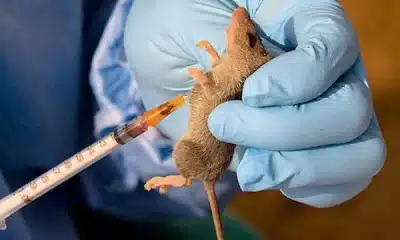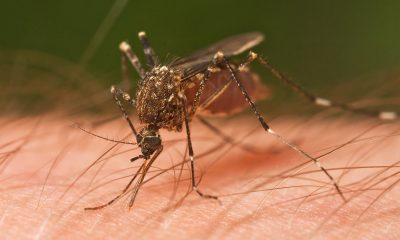Gist
Concerns As 200 People Die Of Lassa Fever In Nigeria Recently

According to the latest update from the Nigeria Centre for Disease Control (NCDC), at least two hundred people died recently as the number of suspected cases of Lassa fever in Nigeria increased.
The health agency reported that the cases of the disease this year have reached a staggering 8,542.
Out of these, 1,170 cases have been confirmed, and sadly, 200 lives have been lost to this deadly disease as of December 3, 2023, Naija News understands.
These confirmed cases were reported from 28 states and 114 Local Government Areas across the country. The latest widespread occurrence of Lassa fever has raised concerns among the citizens as communities call for immediate response.
The Death Records Not Just A Statistic – Adetifa
In a statement released by the NCDC Director General, Ifedayo Adetifa, it was revealed that the increase in reported cases can be attributed to various factors including improved surveillance, better community awareness, and the detrimental impact of climate change and other human activities on the environment.
“In 2021, 510 confirmed cases were reported across 17 states and 68 LGAs. Whereas in 2022, Nigeria reported 1067 confirmed cases across 27 States and 112 LGAs. In 2023 alone, 28 states and 114 LGAs have reported confirmed cases of Lassa fever and as of December 3, 2023, there have been 8542 suspected cases, 1170 confirmed cases, and 200 deaths (case fatality rate of 17.1 per cent) suggesting 2023 may witness record numbers of cases.
“Annual outbreaks of Lassa fever also involve the infection and death of healthcare workers. This loss of life is not just a statistic but a significant loss of a loved family member, a spouse, a parent, and often a seasoned healthcare worker and team member. This exacerbates the challenge of insufficient human resources for health in the country,” Adetifa noted in the statement.
The NCDC, however, stated that the Technical Working Group of the centre has implemented strategic measures to improve coordination, collaboration, and communication, thereby enhancing preparedness and readiness for potential surges in Lassa fever cases.
It noted that the Lassa virus is responsible for causing acute viral hemorrhagic fever, with the Mastomys natalensis rodent serving as its natural reservoir.
Apart from the said rodent, other rodents can also carry the virus. Naija News understands that the virus spreads through direct contact with infected rats’ urine, faeces, saliva, or blood, as well as through contact with contaminated objects, household items, and surfaces.
Consuming food or water contaminated with the virus can also lead to transmission.
Additionally, person-to-person transmission can occur through direct contact with the bodily fluids of an infected individual, including blood, urine, faeces, vomit, and others. Initially, Lassa fever presents symptoms similar to common illnesses accompanied by a fever, such as malaria. Other symptoms include headache, general body weakness, cough, nausea, vomiting, diarrhoea, muscle pains, chest pain, sore throat, and, in severe cases, bleeding from various body openings like the ears, eyes, nose, and mouth.
What To Know
It is worth noting that the incubation period for the Lassa Fever disease ranges from three to 21 days, during which no symptoms are present.
However, early detection and treatment significantly improve the chances of patient survival.
Individuals of all age groups who come into contact with the urine, faeces, saliva, or blood of infected rats are at the highest risk of contracting Lassa fever.
This includes individuals living in environments infested with rats, those who consume potentially contaminated food, especially if it has been left open overnight or dried outside, and those who handle or process rodents for consumption.
Additionally, individuals who do not practice proper hand hygiene, caretakers of infected individuals with inadequate infection prevention and control measures, and healthcare workers are also at risk.








